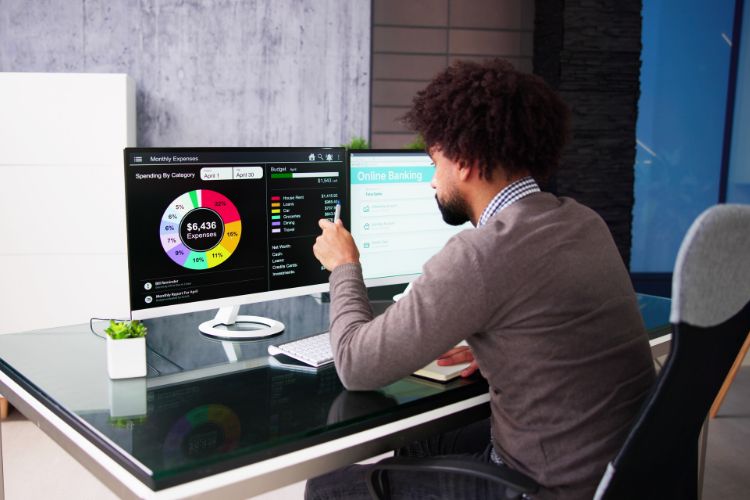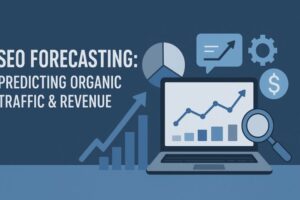Ever wondered why some brands seem to pop up everywhere — your inbox, Instagram feed, and even the top of Google search results? That’s not luck; it’s the magic of multi-channel digital marketing. A strategic digital marketing company in Bangalore can transform scattered marketing efforts into a cohesive brand experience that drives conversions, not just clicks.
What Is a Multi-Channel Digital Strategy?
In simple terms, a multi-channel strategy connects multiple marketing platforms — social media, SEO, email, PPC, and content marketing — to create a seamless customer journey. The goal? To meet your audience wherever they are. According to Pew Research, over 90% of adults use multiple digital platforms daily, proving that your audience doesn’t stay in one place — so why should your marketing?
Why Multi-Channel Marketing Works
Think of your marketing like a symphony. Each channel — whether it’s email, search, or social — plays its own instrument. When they’re in sync, the result is harmony that captures attention and converts leads into loyal customers.
Here’s why it matters:
- Increased Reach: Expands visibility across different platforms, ensuring you connect with varied audience segments.
- Consistent Branding: Reinforces your message through repetition across channels, improving recall and trust.
- Data-Driven Insights: Multi-channel tools provide richer data on customer behavior and preferences.
Brands using multi-channel marketing see a 250% higher engagement rate compared to those relying on a single channel, according to HubSpot.
Core Elements of a Winning Multi-Channel Strategy
Building an effective multi-channel digital strategy isn’t about being everywhere at once — it’s about being where it matters most. Here’s a breakdown of what makes it work:
1. Cohesive Messaging Across Channels
Every interaction — whether a tweet, blog post, or ad — should sound like it’s coming from the same brand voice. Consistency doesn’t mean monotony; it means alignment. A digital marketing agency in India ensures all channels follow your brand’s narrative while adapting tone to fit the medium.
2. Smart Use of Paid and Organic Tactics
Organic efforts like SEO build long-term credibility, while paid channels such as PPC offer immediate visibility. When blended well, these approaches complement each other. For instance, engaging a best PPC company in Kolkata can help boost your ad campaigns while SEO nurtures sustainable ranking over time.
3. Customer-Centric Personalization
Today’s consumers expect brands to “get them.” Using data-driven personalization, marketers can tailor campaigns to different audience personas. From email recommendations to retargeting ads, personalization boosts click-through rates by up to 26%, as noted by Statista.
4. Integration of Automation and Analytics
Automation tools streamline repetitive tasks like email scheduling, while analytics measure what’s working and what’s not. Together, they provide clarity, efficiency, and a roadmap for continuous improvement. For example, Google Analytics or HubSpot dashboards offer cross-channel insights that drive smarter decisions.
Practical Steps to Execute Multi-Channel Marketing
- Identify Your Primary Channels: Analyze where your audience spends time — Facebook, LinkedIn, or search engines — and prioritize accordingly.
- Develop Channel-Specific Content: Adapt your message to fit the context of each platform.
- Leverage Cross-Promotion: Drive traffic between your channels to create a unified experience.
- Monitor, Measure, and Adjust: Use data analytics to refine campaigns for optimal performance.
Real-World Example
Imagine a local fashion startup collaborating with a digital marketing company in Bangalore. Through synchronized SEO, influencer outreach, and PPC campaigns, the brand sees a 3x increase in leads and 40% rise in sales within six months. That’s the power of synergy — when channels align, results multiply.
FAQs
1. What’s the main difference between omnichannel and multi-channel marketing?
While multi-channel focuses on using multiple platforms, omnichannel ensures a seamless customer experience across all of them. Both are crucial for customer engagement.
2. How many channels should a business use?
Quality trumps quantity. Start with 3–4 well-optimized channels and expand as your business grows. Spreading too thin can dilute effectiveness.
3. Is email still effective in a multi-channel strategy?
Absolutely. Email remains one of the highest ROI tools — for every $1 spent, it returns about $36, according to Litmus.
4. Can small businesses afford multi-channel strategies?
Yes, especially with scalable tools and expert guidance from agencies. A strategic approach, not a massive budget, defines success.
Also Read : How Event Management Sector is Smashing Via Digital marketing
Final Thoughts
Multi-channel digital strategies aren’t just a trend — they’re the future of marketing. Whether you’re nurturing leads, boosting brand awareness, or scaling conversions, success lies in creating consistent, customer-focused experiences across every touchpoint.
Blog Development Credits:
This post was conceptualized by Amlan Maiti, researched and written using next-gen AI tools like ChatGPT, Google Gemini, and Copilot, and optimized for SEO by Digital Piloto Private Limited.





